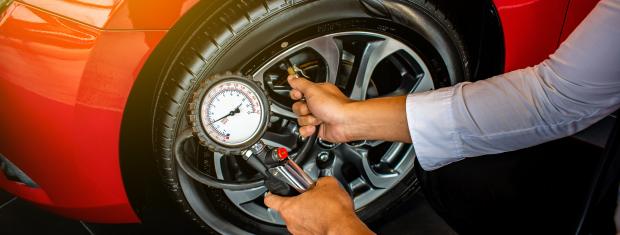
Why Proper Tire Inflation is So Important
Maintaining the appropriate PSI tire pressure on all of your vehicle’s tires is a critical element of overall car maintenance. Not only does improper inflation cost you money in the long run from wear and tear, it also makes driving more dangerous.
The recommended PSI for your tires can generally be found on the driver’s door jam or inside of your owner’s manual. Experts recommend you check tire pressure at least once a month, and more often during cold months. Here are some things to keep in mind:
Dangers of Over Inflation
An overinflated tire will become stiff and rigid, reducing the amount of rubber that comes into contact with the road. This lack of contact can result in:
- Decreased control of your vehicle
- Higher risk of damage when coming into contact with potholes or debris on the road
- Increased risk of an explosive flat tire due to excessive pressure
Dangers of Under Inflation
An underinflated tire is far more dangerous and can create numerous problems including:
- Noticeable wear on your tires tread, reducing the life of the tire by as much as 25%
- Reduction of fuel economy
- Decreased control of your vehicle
- Higher risk of damage when coming into contact with potholes or debris on the road
Tire Inflation Tips
- Check tire pressures regularly. Once a week is best, but no less than once a month and always before any long road trip.
- Use a quality pressure gauge. Dial and digital gauges are more accurate and cost $10 to $20.
- Follow the vehicle manufacturer’s recommended inflation pressures and not the pressure molded into the tire sidewall.
- Check the pressures before driving when tires have been at rest and are not hot.
- An increased pressure reading (typically 2 to 6 psi higher) is normal when tires are hot.
- If recommended by the vehicle manufacturer, increase tire pressures for towing, carrying heavy loads, or extended highway travel.


